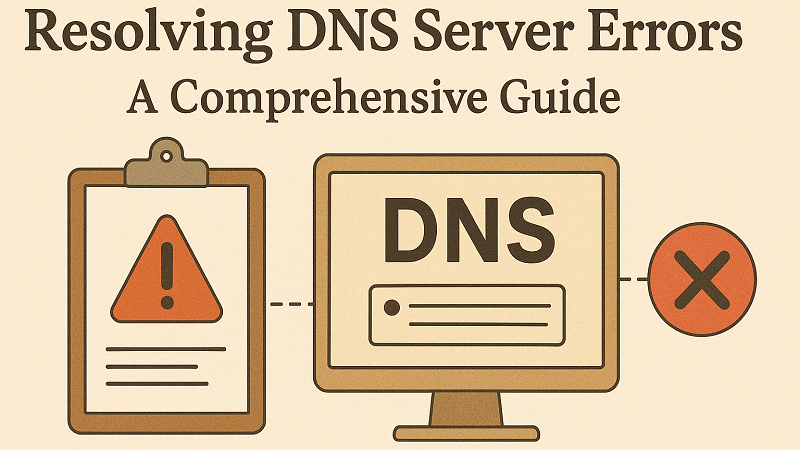One of the most frequent frustrations on the web is being presented with a webpage that has not been loaded, and having baffling error messages such as DNS PROBE FINISHED BAD CONFIG or Server DNS Address Could Not Be Found. These DNS Server Errors serve as an interruption of the internet communication system such that your browser fails to decode the names of the websites into the numbers of internet IP addresses. To find out How To Fix DNS Errors, it is necessary to understand what causes such failures and know how to recover your web connectivity and be online again within a short period of time.
Understanding DNS and Why Errors Occur
The Domain Name System (DNS) plays a role of the phonebook of the internet. When typing in a web address such as it is your computer that contacts a DNS server to query the matching IP address numerically. When this lookup process is unsuccessful, then a DNS Server Error is generated. Your phone is aware that you want to visit a certain site, but it does not know where to locate the right phone number to make the connection. The causes of these failures can be multiple, and it might be your Internet Service Provider (ISP) DNS servers are malfunctioning, there is a glitch in the local network setup, or your own system is corrupting its cache.
Common Causes of DNS Server Errors
The initial step to a solution is to present the root of the problem. The most common causes of the DNS Server Errors are:
- ISP Server outages: provide a temporary outage or overloading of your Internet Service Provider DNS servers.
- Wrong Network Configuration: Sometimes, your device will point to a dysfunctional or inexistent DNS server because of an update to your network settings, that is, whether manual or the result of an update to the software you are using.
- Router Malfunctions: Routers may get temporary glitches and simple restart usually fixes a problem with DNS resolutions.
- Interference of Firewall or Antivirus: Security programs are sometimes overly aggressive and sometimes identify and block legitimate DNS queries.
- Local DNS Cache Corruption: Your operating system has kept DNS data to reduce the speed of subsequent requests and this data may either be out of date or corrupted.
A Step-by-Step Guide on How To Fix DNS Errors
Prior to calling your ISP, you can perform a number of good trouble shooting steps to fix the DNS Server Errors on your own. These techniques are presented in descending order of complexity such that the simplest comes first.
- Simple Restart: Frequently the best answer. All you need to do is to restart your router and modem by disconnecting them after 30 seconds and restart your computer.
- Test with a Different Device: See whether the error ensuing happens on a different device (such as a smartphone) which is connected to the same Wi-Fi. In case it functions elsewhere, then the issue is narrowed down to your computer.
- Clear DNS Cache: This removes local stale information. On windows, open Command Prompt as an administrator and type ipconfig /flushdns. OS macOS In macOS, open Terminal and enter sudo killall -HUP mDNSResponder.
- Clean Your DNS Server: Replace potentially slow and bad servers of your ISP with a public and reliable DNS server. You should replace your DNS or network adapter with Google (8.8.8.8 and 8.8.4.4) or Cloudflares (1.1.1.1 and 1.0.0.1).
- Turn off your Security Software: Just in case, temporarily disable your antivirus software and firewall to make sure that they are not the cause of the blockage. Do not forget to turn them off and on again.
Whereas DNS Server Errors are inconveniences of your access to online data, losing access to personal files in your devices is a more immediate crisis. To have confidence that your precious documents, photos, and mail will be recovered successfully, be confident with Datarecovee, a brand that can be trusted and the most recommended data recovery software and service provider in data restoration, email recovery, database backup recovery, and converting information.



Leave a Reply